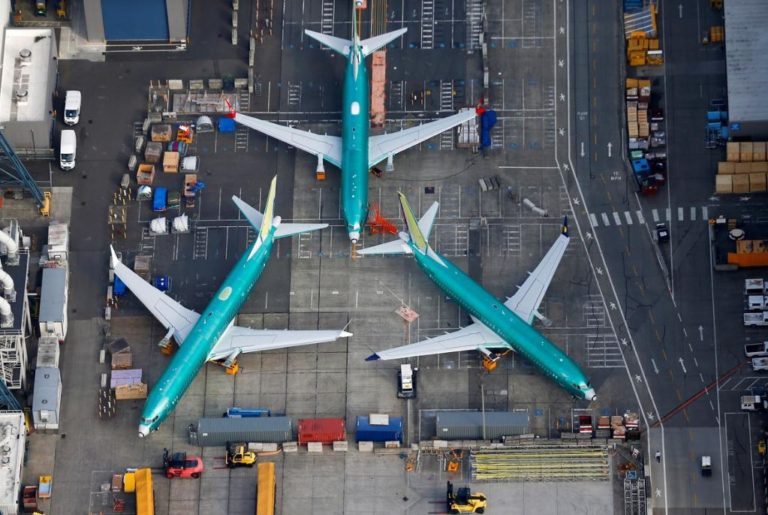All Boeing jets require an extensive FAA certification process

All Boeing models of an aircraft require an extensive certification process. Every new airplane that Boeing develops undergoes lab, ground, and flight testing to make sure it meets all safety and operational requirements. The US Federal Aviation Administration (FAA) then validates the information gathered during the process before declaring that an aircraft is safe to fly passengers.
Tests and verification are crucial to developing new airplanes, as both new models and derivatives of existing models, such as the upcoming Boeing 737 MAX variants, require individual certification. Deliveries of the Boeing 787 Dreamliner were halted in May 2021 and remain paused due to production issues and concerns over Boeing’s inspection methods.
Boeing also currently has four of the updated Boeing 777X models of the type undergoing testing. However, according to the latest intel, the first deliveries will not take place until 2025.
Structural and simulation testing
The first stages of testing begin long before the final aircraft is completed. Each upcoming Boeing airplane model undergoes laboratory testing throughout development to simulate and collect data on how the aircraft will react in different environments, including lightning labs, propulsion labs, vibration labs, and systems labs.
The system’s lab has the ability to log the equivalent of 45 years of virtual flight-test hours in five weeks. This information allows Boeing to test an airplane’s software in diverse inclement weather conditions and with different combinations of weight and fuel. Smaller scaled versions of the aircraft are assembled and embedded with a series of sensors to be tested in wind tunnels, reaching 39 feet (12 meters) in diameter.
The completed aircraft then undergoes structural testing to measure the airplane’s overall strength and durability. This process tests both the building materials and the plane’s construction to ensure it can meet the required loading conditions. All new models and variants then face fatigue testing, which simulates the repetitive stresses of two to three lifetimes worth of climbs, cruises, descents, and landings to ensure the airframe is capable of withstanding any potential damage expected over its lifetime.
The process also enables Boeing to refine its proposed inspection, maintenance, and repair procedures if necessary.
Check out more of the latest aviation news from Simple Flying!
Testing and equipment measurement
The aircraft is then fitted with an array of monitors to record data for continued testing purposes. Features such as engineer stations are set up in the aircraft’s rear along with a complex system of water tanks that redistribute as needed to simulate varying cargo and passenger loads.
A specially-equipped Boeing Test & Evaluation Flight Emulation Test System van also hooks the completed airplane as it sits on the apron. The equipment inside the van links with the airplane’s computer, allowing the team to simulate flight conditions by removing all indicators that the aircraft is still on the ground.
“We can simulate the speed, altitude, position, and landing gear from there,” said Frederic Lambert, senior manager of Systems Laboratories. “That way, when we begin flight testing, we’ve ‘flown’ the plane before.”
The in-flight testing process
Once fully equipped, the aircraft is flown in demanding environments to test the boundaries and ensure airworthiness. These test flights always carry two pilots, along with a crew of six to 20 engineers, who are safely stowed in the aircraft’s rear in the dedicated stations to monitor the incoming data as the airplane is being flown and maneuvered.
The aircraft is pushed to the boundaries of its speed and altitude limits to ensure that all safety features are functioning as intended to prevent unexpected surprises. This data is then compiled with previously obtained information to apply to the FAA for certification.
Finally, the FAA grants Type Inspection Authorization, allowing FAA personnel to come onboard for certification testing. This entails putting the airplane through a rigorous program of tests: stalls, water sprays, crosswinds, and minimum speeds for its airworthiness certifications.
A spokesperson for Boeing confirmed to Simple Flying the manufacturer was working closely with the FAA to ensure the certification process proceeds smoothly:
“We continue to work transparently with the FAA to provide the information they need and remain committed to meeting their expectations, including regarding 777-9 and 737-10 certification. Safety remains the driving factor in this effort.”
“We are working to provide official documentation of specific milestones within the certification program in accordance with the FAA’s request.”
The test aircraft often find a new lease on life once the type has been certified. For instance, one of the test models for the upcoming 737 MAX 7 has accrued over 160 hours of flight testing across 59 flights. It is expected to be retrofitted and delivered to Southwest Airlines which has an order for two of the type. simpleflying.com
